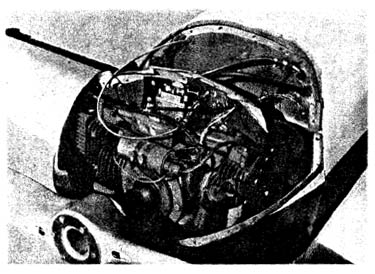Q1 Plans Chapter 1 Page 1-4
- Details
- Category: Quickie Plans
- Published: Tuesday, 13 May 2008 10:58
- Written by Jun Su
- Hits: 11377
The builder of an amateur-built aircraft is the manufacturer; he is responsible for quality control on all parts, all construction, and the conduct of his flight tests. While Quickie Aircraft Corporation is not the manufacturer of your aircraft, we do, through these plans end services, provide you with information about how out Quickie was built and how we feel is the best way for you to build a safe, reliable airplane. We do encourage you to build the airplane as shown on the plans because we have found that our airplane provides us with reliability and safety, and any problems that we experience with our aircraft are documented end reported in "The Quickie Newsletter". we have gone to a considerable effort in developing the design, the structure, and the systems, and proving their adequacy with appropriate tests.
If you modify the airplane and then ask us if your modification will work, we cannot give you an answer without conducting the appropriate tests and totally qualifying the modification. This would obviously be quite expensive. Our concern then, is that if your modification is not successful, and causes an incident or accident, this would be attributed to our design, the Quickie, Because of this, we must insist that if you modify the airplane with any major change (such as an aerodynamic change, primary structural change, or using a non-approved engine installation), you call your airplane a different name, rather than a Quickie. lf you make a major change, you must consider yourself involved in basic aircraft design and development , an extremely risky business. As such it is not fair to us to be associated with any results of your development. We state this not to discourage inventiveness and progress, but to release any connection of your new development efforts with our proven design, the Quickie.
We are particularly concerned about individuals using alternate engines to power their Quickies. The Quickie was designed around our engine; any change would require an exhaustive test program to determine not only the new engines suitability as an aircraft powerplant, but also its suitability as a Quickie powerplant.


FAA Licensing Procedures
This procedure applies in the U.S.A. only. The FAA has a definite procedure for registering and licensing homebuilt aircraft. There is nothing complicated about it but they insist that you follow each step carefully.- Contact your local FAA engineering and manufacturing district office or FAA general aviation district office. Tell them you are building a Quickie homebuilt. Give them the following information:
- 3-View drawing of the Quickie
- Aircraft serial number
- Aircraft registration number, if available(see step #2)
- Approximate date of completion
- Engine-type
- This step is optional, and applies only if you want to reserve 2 specific registration number (the number you will paint on the tail). You can ask for all numbers, numbers followed by a single letter or numbers followed by two letters. They are preceded by the letter "N" (For example N77Q, N79DE etc.) Be sure to give them your second and third choice, in case the number you want is already taken. Send $10 to reserve your special number. Address FAA Aircraft Registry, Box 25082, Oklahoma City, Ok. 73125. Do not register your aircraft yet, you don't need to pay registration fees, property taxes, etc., until your airplane is ready to fly.
- When you are ready for inspection* contact your local FAA office. Be sure you have an airframe log book(available from Aircraft Spruce) so that FAA can make an inspection entry.
- To prepare for your final inspection, be sure you have; the "N" number painted on, the "Experimental" sign(2" high letters) on the canopy frame, the ID plate (available from Aircraft Spruce), and an airframe log book and an engine log book. book. Before final inspection, fill out an application for registration (FAA form #AC8050-1), a notarized affidavit that you built the airplane from parts that you bought yourself, and include $5 registration fee. Send those three things to the FAA Registry, Box 25082, Oklahoma City, Ok. 73125
- After you have made a final inspection of your aircraft, run the engine. conduct low speed taxi tests, etc., (see owners manual), contact your local FAA office and tell them you are ready to fly. They will have you fill out an application for airworthiness (form #8130-6), inspect your airplane, and issue you an airworhiness certificate and a list of operating limitations, that will restrict you to an unpopulated area for your initial test period (60 hours)¡¤ When you have completed your initial test period, contact FAA to get your operating limitations amended so you can fly outside your test area.



